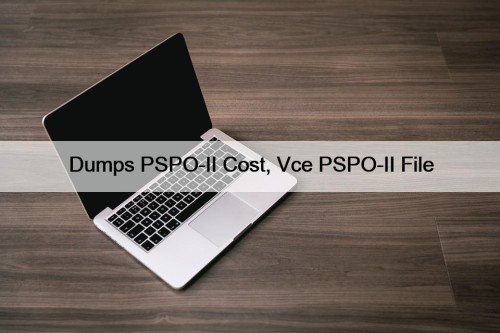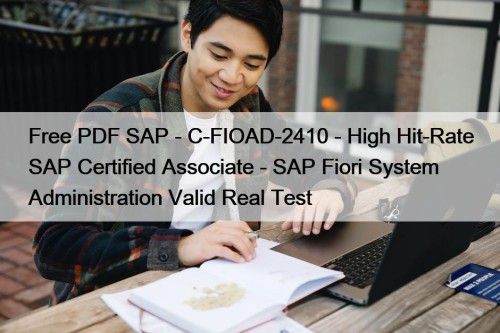Most Popular
 Dumps PSPO-II Cost, Vce PSPO-II File
Dumps PSPO-II Cost, Vce PSPO-II File
P.S. Free & New PSPO-II dumps are available on Google ...
 Free PDF SAP - C-FIOAD-2410 - High Hit-Rate SAP Certified Associate - SAP Fiori System Administration Valid Real Test
Free PDF SAP - C-FIOAD-2410 - High Hit-Rate SAP Certified Associate - SAP Fiori System Administration Valid Real Test
The top of the lists SAP Certified Associate - SAP ...
 SailPoint-Certified-IdentityNow-Engineer Free Updates, New SailPoint-Certified-IdentityNow-Engineer Exam Papers
SailPoint-Certified-IdentityNow-Engineer Free Updates, New SailPoint-Certified-IdentityNow-Engineer Exam Papers
Keeping in mind all these benefits, we ensure you can ...



Dumps PSPO-II Cost, Vce PSPO-II File

P.S. Free & New PSPO-II dumps are available on Google Drive shared by PassReview: https://drive.google.com/open?id=1MrNi2Urjy9loyHSFyuNx4BwyJbHFstEx
We have brought in an experienced team of experts to develop our PSPO-II study materials, which are close to the exam syllabus. With the help of our PSPO-II study materials, you don't have to search all kinds of data, because our products are enough to meet your needs. You also don't have to spend all your energy to the exam because our PSPO-II Study Materials are very efficient. Only should you spend a little time practicing them can you pass the exam successfully.
Scrum PSPO-II exam is an advanced level certification exam for Scrum Product Owners who want to further their understanding of the Scrum framework and demonstrate their mastery of Scrum principles and practices. PSPO-II Exam is designed to test the Product Owner’s ability to apply Scrum in complex and challenging environments and is highly valued in the Agile community.
Vce PSPO-II File - Accurate PSPO-II Study Material
You are in a quest for high quality practice materials like our PSPO-II preparation exam. We avail ourselves of this opportunity to approach you to satisfy your needs. In order to acquaint you with our PSPO-II practice materials, we wish to introduce a responsible company dealing with exclusively in area of PSPO-II training engine and it is our company which keeps taking care of the readers' requests, desires and feeling about usage of our PSPO-II study questions in mind.
To be eligible for the PSPO-II Exam, candidates must have a good understanding of Scrum principles and practices, as well as experience working as a Product Owner in a Scrum environment. PSPO-II exam is challenging and requires candidates to demonstrate their ability to apply advanced product ownership concepts such as product vision, stakeholder management, product backlog refinement, and value optimization.
Scrum Professional Scrum Product Owner II Sample Questions (Q58-Q63):
NEW QUESTION # 58
Your product's nearest competitor has lower market share, but has higher customer satisfaction, though they lack some key features of your product. You are losing market share to them as customers discover them. They release 3 times faster than you, which is helping them to win customers. What should you do first in response?
(choose the best answer)
- A. Lower your product's price to make it more attractive to new and existing customers.
- B. Add features to your next release that you think will retain and win customers.
- C. Improve your time-to-market and rate of innovation to improve your responsiveness.
- D. Find new markets for your product that your competitor is not yet in.
Answer: C
Explanation:
Verified answer: C
Very Very Short Explanation: According to the PSPO II guidelines, the focus should be on improving time-to-market and rate of innovation to enhance responsiveness . This aligns with the principles of agility and Scrum, which emphasize the importance of delivering value quickly and responding to market changes123. By improving these areas, you can better meet customer needs and compete more effectively in the market.
NEW QUESTION # 59
You have a Scrum Team that has been working together for over a year. The Scrum Team consists of 11 members who rarely collaborate and work within their functional boundaries. There are no Sprint Goals and most of the items in the Sprint Backlog are unrelated. The Scrum Team has concluded that it is not possible to create Sprint Goals based on the items in the Product Backlog.
What might explain why the Scrum Team is finding it difficult to craft Sprint Goals? (choose all that apply)
- A. The Product Owner doesn't set objectives that he/she wants to achieve with upcoming Sprints.
- B. Scrum might not be the best framework for this team.
- C. The Product Owner is not empowered to make decisions about items in the Product Backlog nor how they are ordered.
- D. The Scrum Team is too big.
- E. The Sprints are too long
Answer: A,B,C
NEW QUESTION # 60
You are the Product Owner for a product with diverse stakeholders with differing opinions that sometimes conflict. Your director of Marketing strongly believes that you should add a major new feature to reach a new market. You CEO believes that the new feature is too expensive and thinks you should focus on other features to make existing customers happier. The CEO says that as Product Owner it is ultimately your decision. You think both perspectives have merit, but you cannot do both.
How should you proceed? (choose the best answer)
- A. Trust the CEO's opinion and focus on current customers, since you cannot afford unhappy customers.
- B. Devise an experiment that will help the company to better understand the new market and its potential.
- C. Better understand the positions of other stakeholders to gather more information, then make a decision
- D. Trust the Director of Marketing's opinion and add the features; when revenues increase, you will be vindicated.
Answer: B
NEW QUESTION # 61
Which of the following would likely be the least effective way to enhance the agility of your future product development?
(choose the least effective approach)
- A. Lean on your organizational efficiency and existing architecture to build your product aligned to the current organization.
- B. Clearly understand the producer, buyer/consumer relationship.
- C. Form a holistic view of how the customer sees your product.
- D. Consider whether there is a significantly large enough market for your product.
Answer: A
Explanation:
Explanation
As a Product Owner, you need to embrace agility and empiricism in your product development. This means that you should be able to inspect and adapt your product based on feedback from the market, customers, users, and stakeholders. You should also be able to experiment and learn from your failures and successes. To do this, you need to have a flexible and adaptable product architecture that can support frequent changes and new features. You also need to collaborate with your Scrum Team and other teams in the organization to deliver value incrementally and iteratively. Therefore, leaning on your organizational efficiency and existing architecture to build your product aligned to the current organization is the least effective way to enhance your agility. This approach can limit your innovation, creativity, and responsiveness to the changing needs and expectations of your customers and users. It can also create silos, dependencies, and conflicts within and across teams, and reduce the quality and value of your product.
References:
* Professional Scrum Product Owner™ II Certification
* Evolving the Agile Organization
* Managing Products with Agility
NEW QUESTION # 62
What might indicate to a Product Owner that they need to work more with the Scrum Team?
(choose the best answer)
- A. The acceptance criteria for the Product Backlog items do not appear to be complete.
- B. People frequently leave the Scrum Team.
- C. The Increment presented at the Sprint Review does not reflect their expectations.
- D. They are not working full time with the Scrum Team.
Answer: C
Explanation:
* Option D is the best answer because it indicates that the Product Owner and the Scrum Team are not aligned on the vision, goals, and value of the product. The Product Owner is responsible for maximizing the value of the product and the work of the Scrum Team1. Todo so, the Product Owner needs to work closely with the Scrum Team, communicate the product vision, provide clear and valuable Product Backlog items, collaborate on the Sprint Goal, and inspect and adapt the product based on feedback23.
If the Increment presented at the Sprint Review does not reflect the Product Owner's expectations, it means that there is a gap between what the Product Owner wants and what the Scrum Team delivers.
This gap can lead to waste, rework, dissatisfaction, and missed opportunities. The Product Owner should work more with the Scrum Team to ensure that they have a shared understanding of the product and its value proposition, and that they deliver Increments that meet the Definition of Done and the acceptance criteria45.
* Option A is not the best answer because it does not necessarily imply that the Product Owner needs to work more with the Scrum Team. People may leave the Scrum Team for various reasons, such as personal, professional, or organizational factors. While the Product Owner should care about the well-being and motivation of the Scrum Team members, and try to foster a positive and collaborative environment, the Product Owner is not accountable for the people management or the team composition1. The Scrum Master is more likely to address the issues that cause people to leave the Scrum Team, such as impediments, conflicts, or dysfunctions.
* Option B is not the best answer because it does not necessarily imply that the Product Owner needs to work more with the Scrum Team. The Product Owner is expected to spend enough time with the Scrum Team to provide them with the necessary guidance and feedback2. However, the Product Owner also has other responsibilities, such as engaging with stakeholders, customers, and users, managing the Product Backlog, validating the product value, and aligning the product strategy with the business goals12. The Product Owner does not need to work full time with the Scrum Team, as long as they are available and accessible when needed, and they empower the Scrum Team to make decisions and self-organize .
* Option C is not the best answer because it does not necessarily imply that the Product Owner needs to work more with the Scrum Team. The acceptance criteria for the Product Backlog items are the conditions that must be met for the items to be considered done and valuable. The Product Owner is accountable for defining and communicating the acceptance criteria to the Scrum Team1. However, the
* Product Owner can also collaborate with the Scrum Team and the stakeholders to refine and clarify the acceptance criteria, and to ensure that they are aligned with the Definition of Done and the Sprint Goal .
The acceptance criteria for the Product Backlog items may not appear to be complete at the beginning of the Sprint, but they can be refined and updated throughout the Sprint, as long as they do not change the scope or the value of the items. The Product Owner should work with the Scrum Team to ensure that the acceptance criteria are clear, testable, and valuable, but they do not need to work more with the Scrum Team just because the acceptance criteria are not complete at a certain point in time.
References:
* 1: Product Owner Accountabilities
* 2: Product Backlog Management
* 3: Product Value
* 4: Product Vision
* 5: Sprint Review
* : Scrum Master Accountabilities
* : Stakeholders & Customers
* : Business Strategy
* : Definition of Done
* : Product Backlog Refinement
* : Sprint Planning
* : Sprint Backlog
NEW QUESTION # 63
......
Vce PSPO-II File: https://www.passreview.com/PSPO-II_exam-braindumps.html
- PSPO-II Exam Braindumps 🌔 New PSPO-II Exam Sample 🥦 Download PSPO-II Free Dumps 😋 The page for free download of ➤ PSPO-II ⮘ on ✔ www.dumps4pdf.com ️✔️ will open immediately 🏓Latest PSPO-II Dumps Ebook
- Quiz High Pass-Rate Scrum - PSPO-II - Dumps Professional Scrum Product Owner II Cost ⚫ Search for 《 PSPO-II 》 on ➠ www.pdfvce.com 🠰 immediately to obtain a free download 🌍Valid PSPO-II Test Forum
- PSPO-II Detail Explanation 📠 PSPO-II Detail Explanation 🧏 PSPO-II Exam Online 📎 Enter ➠ www.examcollectionpass.com 🠰 and search for ➤ PSPO-II ⮘ to download for free 💸New PSPO-II Exam Sample
- PSPO-II Exam Online 👻 New PSPO-II Exam Sample 🏣 PSPO-II Detailed Study Dumps 🐯 Go to website ✔ www.pdfvce.com ️✔️ open and search for ▷ PSPO-II ◁ to download for free 🍗PSPO-II Advanced Testing Engine
- PSPO-II Exam Tutorials 🌰 PSPO-II Exam Materials ⛳ Reliable PSPO-II Mock Test ⌨ Search for ✔ PSPO-II ️✔️ and download exam materials for free through ▷ www.pass4test.com ◁ ➡PSPO-II Exam Materials
- PSPO-II Test Questions Answers 👯 Valid PSPO-II Test Forum 😻 PSPO-II Detail Explanation ⚪ Search for ➥ PSPO-II 🡄 and obtain a free download on { www.pdfvce.com } 💢PSPO-II Test Questions Answers
- Quiz High Pass-Rate Scrum - PSPO-II - Dumps Professional Scrum Product Owner II Cost ⚔ Immediately open ➠ www.examcollectionpass.com 🠰 and search for ⮆ PSPO-II ⮄ to obtain a free download 🐆PSPO-II Latest Braindumps Free
- PSPO-II Exam Braindumps 🛺 Latest PSPO-II Dumps Ebook 💟 Latest PSPO-II Dumps Ebook 🍄 Open ▛ www.pdfvce.com ▟ and search for ➤ PSPO-II ⮘ to download exam materials for free 🐌Latest PSPO-II Braindumps Sheet
- Quiz High Pass-Rate Scrum - PSPO-II - Dumps Professional Scrum Product Owner II Cost ♿ Search on ➽ www.examdiscuss.com 🢪 for { PSPO-II } to obtain exam materials for free download 🐙PSPO-II Actualtest
- Pass Guaranteed 2025 Scrum Valid Dumps PSPO-II Cost 🛂 Go to website [ www.pdfvce.com ] open and search for ▛ PSPO-II ▟ to download for free 😹Questions PSPO-II Pdf
- PSPO-II Test Questions Answers ◀ Online PSPO-II Test 🎿 Latest PSPO-II Braindumps Sheet 🎇 Search for ▛ PSPO-II ▟ on ➥ www.real4dumps.com 🡄 immediately to obtain a free download 📂PSPO-II Latest Braindumps Free
- PSPO-II Exam Questions
- hovih34342.thelateblog.com hovih34342.glifeblog.com www.yuliancaishang.com hzxxg.juweimei.cn 5000n-01.duckart.pro keleshare.cn 91xiaojie.com www.kaoydoc.com 祥龍天堂.官網.com www.peizi.sh.cn
P.S. Free & New PSPO-II dumps are available on Google Drive shared by PassReview: https://drive.google.com/open?id=1MrNi2Urjy9loyHSFyuNx4BwyJbHFstEx
Tags: Dumps PSPO-II Cost, Vce PSPO-II File, Accurate PSPO-II Study Material, Latest Braindumps PSPO-II Ebook, PSPO-II Accurate Answers